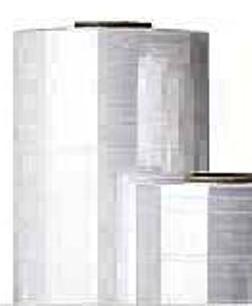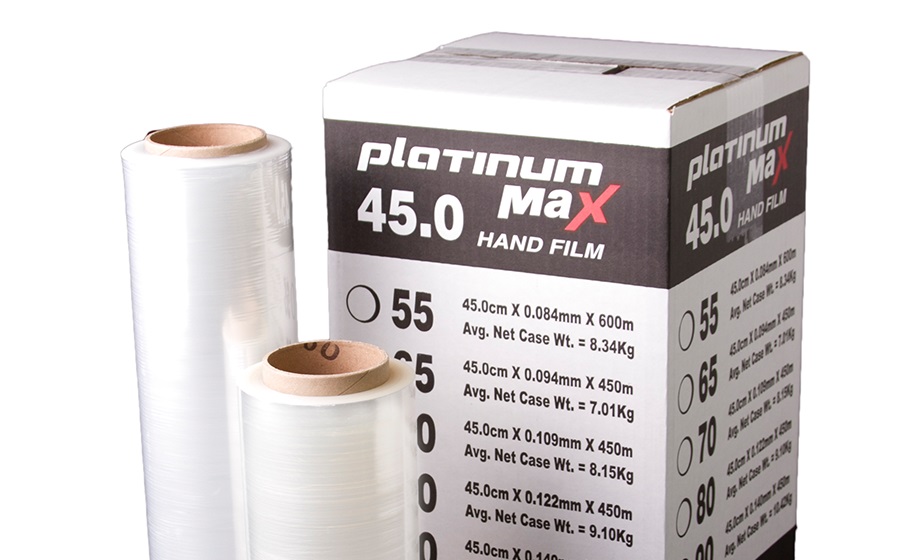Pallet Stretch Wrap

Proper pallet stretch wrapping can reduce chances of damage during shipping. More and more companies are palletizing loads for delivery because it is the most cost-effective way to transport large merchandise. When items are delivered on a pallet, there is less chance that they will be damaged. This is because pallets are handled only by forklift trucks, not by workers. For a pallet to arrive at its destination with no damage, a pallet must be properly packed and wrapped prior to being transported.
Our pallet stretch wrap is manufactured to provide high-quality strength and cling to our consumers, ensuring pallet boxes are wrapped tightly, preventing incidences of product shifting during transport. Our highly stretchable plastic film is created from linear low-density polyethylene (LLDPE) and is often used to wrap boxes on a pallet. The elastic recovery of the stretch film allows products to remain tightly bundled.
Using pallet stretch wrap is an integral part of the shipping process. Effective stretch wrapping of boxes onto pallets not only secure the boxes into place, but also detours possible load pilferage, product damage, and reduces worker injury.
Toronto Stretch Wrap and Danshar Polybag and Resin Inc. provides you with the following tips on how to wrap a pallet, which follow the guidelines of multiple shipping companies:
1. Choose the proper pallet.
Select a pallet that is in excellent shape. The pallet should be strong enough to hold loads and large enough, so your shipment does not hang over the edges of the pallet. Ensure your pallet is sturdy and always avoid using pallets that have protruding nails or broken boards. The pallet should be the correct size to accommodate your items.
2. Stack your shipment on the pallet.
Use pallet lined paper or a slip sheet under the load and under every third layer to evenly distribute weight throughout your shipment and to protect the bottom layer. When stacking, leave no spaces between products and place your items as close together as possible. Should boxes have gaps between them, the loads will shift, compromising the overall stability of the pallet and increasing the chances of product damage. Should gaps remain despite your best efforts to prevent them, place anti-slip layer sheets between the layers to prevent movement. Ensure you place larger, heavier items at the bottom of pallet to reduce the risk of possible damage during transport.
Align boxes in columns from corner to corner for a stronger load. Boxes should be new and able to handle stacking and always stack smaller, lighter items on heavier items. Make sure boxes are sealed securely. Consider how your products will be aligned. An interlocking brick stacking pattern may seem to promote load stability but in effect, will damage the boxes more than a column stacking pattern.
3. Secure your shipment to the pallet using pallet stretch wrap.
Select pre-stretched film, which requires less effort to wrap without compromising on load holding force. Pallet stretch wrapping the best way to keep all the boxes together and works better than pallet strapping.
Peel off a couple of feet off the stretch film roll. Squeezing about eight inches of the wrap into a loose rope, thread the rope through and around the corner of pallet, tie to secure. Start by applying stretch wrap around the base of the pallet at least four times for optimal results and then, continue wrapping upward around the load, keeping a consistent stretch on the film. Overlap the wrapping by 50 percent, making sure the stretch wrap is tight enough to prevent the possibility of boxes shifting. You can also place a dust cover sheet over top of your shipment to protect it from the time it is packed to the time it is delivered. Make sure you wrap your pallet securely to ensure stability to prevent anything from falling off the pallet. Wrap tightly especially around the corners of the boxes.
Once the wrapping procedure is complete, tear the wrap and press it on the end of the pallet or tuck it under one of the edges of the pallet.
Additional Supplies Used for
Pallet Stretch Wrapping
There are additional products you can use to protect your pallet loads. Edge protectors can greatly reduce chances of shipping damage. Corner boards can be used to stabilize loads, prevent damages to the edges of loads, and increase strength when stacking boxes vertically. These products should cover the entire length and height of loads and be used on all corners. Using edge protectors and corner boards on palletized loads will help maintain each box’s shape, rather than allowing boxes to be squeezed in when stretch wrap is applied. Our pallet wrap is manufactured to provide unmatched strength and durability, especially when wrapping irregular-shaped loads.
Our high-performance pallet stretch wrap speaks for itself. This premium grade film is manufactured carefully with special orientation which allows for down-gauging of film, while maintaining its core strength. Our lightweight rolls offer easier handling, effectively reducing stretch wrapper fatigue. Engineered to outperform competing pallet films, the unparalleled load-holding force as well as tear resistance of our film clings onto itself, providing your company with effective, user-friendly bundling solutions. For more information, contact Toronto Stretch Wrap and Danshar Polybag and Resin Inc.
More Stretch Wrap Tips and FAQs
2899 Steeles Ave. W.,
Units 9 & 10,
North York, Ontario
M3J 3A1
Fax: 1-855-669-6184
For skid quantities of stretch wrap, resin, or plastic bags only, please call
416-993-6804
orderdesk@torontostretchwrap.com
By appointment.
